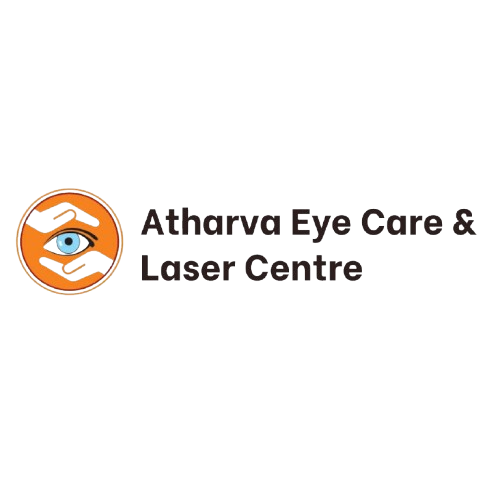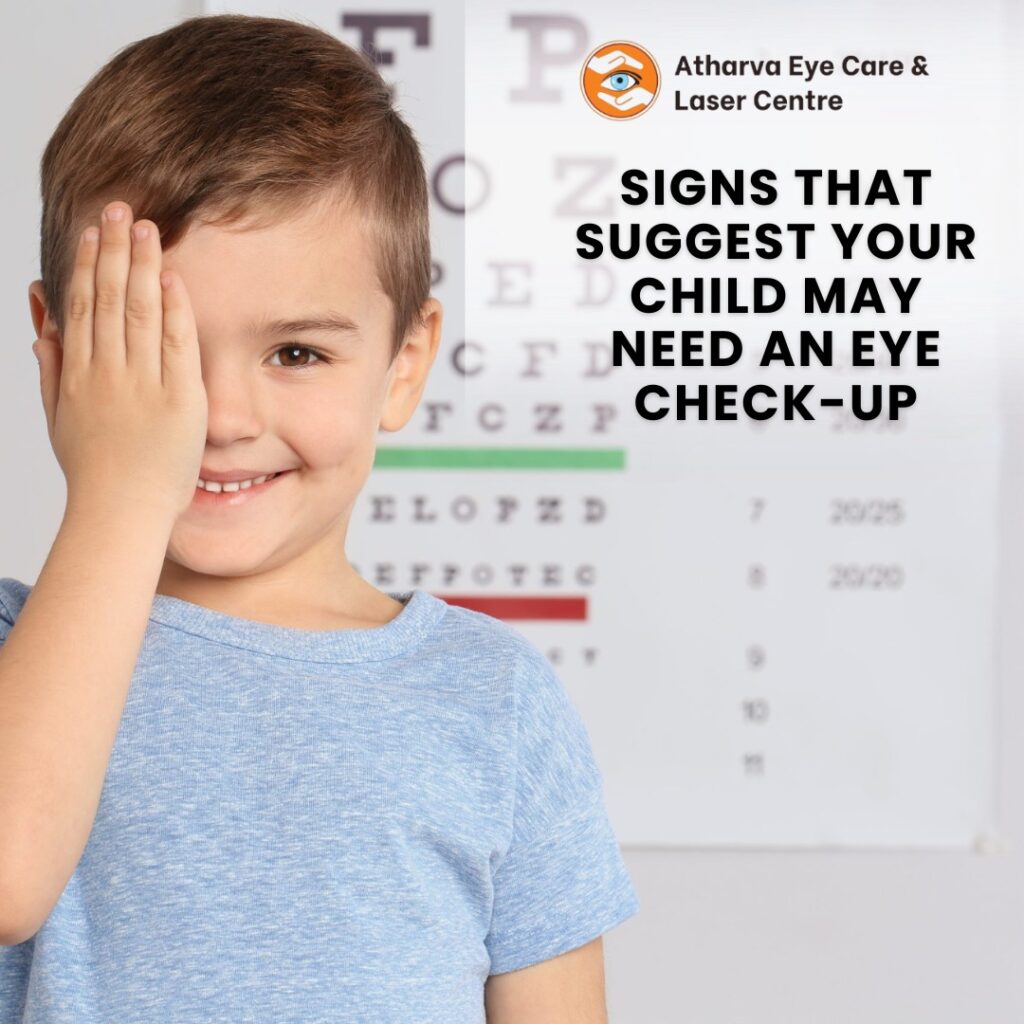- April 23, 2025
- By: atharvaeyeclinic.com
- No Comments
Signs That Suggest Your Child May Need an Eye Check-up
As parents, we pay attention to our child’s physical health, nutrition, and education. But how often do we consider the health of their eyes? Children’s eyes grow and develop rapidly, and early vision issues may go unnoticed until they begin to affect learning and behavior. At Atharva Eye Care and Laser Centre, we believe early detection is the key to preserving your child’s vision.
Here’s a comprehensive guide on the warning signs that suggest your child may need an eye check-up—and what you can do about it.
Why Eye Exams Are Important for Children
Children use their vision for everything—from reading and writing to playing and exploring. Healthy eyesight is essential for their overall development and academic performance. However, since kids often can’t express vision problems clearly, these issues can go undetected.
A routine pediatric eye check-up can:
- Detect refractive errors (like myopia, hyperopia, or astigmatism)
- Identify lazy eye (amblyopia) or crossed eyes (strabismus)
- Prevent learning difficulties related to vision
- Ensure proper visual development
Common Signs Your Child May Need an Eye Check-Up
Pay close attention to the following signs that may indicate your child is struggling with vision:
- Squinting or Tilting the Head
If your child frequently squints or tilts their head to see clearly, it may be a sign of a refractive error. Tilting the head can help compensate for poor vision in one eye, indicating conditions like astigmatism or amblyopia.
- Sitting Too Close to Screens or Holding Books Very Close
Children with nearsightedness (myopia) may move closer to screens or hold books too near to their face. This behavior is often an attempt to see things more clearly.
- Complaints of Headaches or Eye Pain
Frequent headaches, especially after reading or using digital devices, may be caused by uncorrected vision issues or eye strain. Children may also rub their eyes often to relieve discomfort.
- Frequent Eye Rubbing or Blinking
While occasional rubbing is normal, frequent eye rubbing can indicate eye fatigue, dryness, or allergic conjunctivitis. Excessive blinking may also signal eye strain or tics related to visual discomfort.
- Difficulty in Reading or Skipping Lines
Children with vision problems may lose their place while reading, skip lines, or use their finger to guide their eyes. This could be a sign of poor eye tracking or focusing ability.
- Covering One Eye While Reading or Watching
Covering or closing one eye is a red flag for vision imbalance. It often suggests that one eye has weaker vision (amblyopia), and the child may subconsciously avoid using it.
- Poor Academic Performance or Lack of Interest in Studies
Struggling to see the board, read textbooks, or complete homework can directly affect a child’s academic performance. Children may also become frustrated or disinterested in schoolwork if they can’t see clearly.
- Clumsiness or Trouble with Hand-Eye Coordination
If your child is unusually clumsy—bumping into objects or having trouble with tasks like catching a ball—it may be due to depth perception issues or poor visual-spatial awareness.
- Light Sensitivity or Watery Eyes
Excessive tearing or sensitivity to light may indicate eye irritation, inflammation, or even uncorrected vision problems.
- Delayed Developmental Milestones
Vision plays a big role in early childhood development. Delays in activities like crawling, walking, or hand-eye coordination tasks might be linked to vision problems.
When Should Children Have Their First Eye Exam?
The Indian Academy of Ophthalmology recommends that children have their first comprehensive eye exam:
- At 6 months of age
- At 3 years
- Before starting school (around 5–6 years)
- Annually thereafter, or as advised by an eye specialist
These regular check-ups help detect problems early, often before your child even shows symptoms.
What Happens During a Child’s Eye Exam?
At Atharva Eye Care and Laser Centre, our pediatric eye specialists make the eye exam process comfortable and child-friendly. Here’s what you can expect:
- Vision assessment (distance and near vision)
- Eye alignment and movement tests
- Screening for refractive errors
- Examination of eye health using a slit lamp
- Dilated eye exam (if needed, to check the retina and optic nerve)
We also tailor our tests to suit your child’s age and developmental level.
Tips to Support Your Child’s Vision at Home
In addition to regular eye exams, here are some ways you can support your child’s visual health:
- Limit screen time and encourage outdoor play
- Ensure good lighting while reading or doing homework
- Teach proper posture during screen or book use
- Provide a healthy, eye-friendly diet rich in Vitamin A, lutein, and omega-3 fatty acids
- Use protective eyewear for sports or during high-risk activities
Visit Atharva Eye Clinic for Expert Pediatric Eye Care
At Atharva Eye Care and Laser Centre, we offer specialized eye care services for children of all ages. Our team of experienced eye doctors uses the latest equipment and child-centric approaches to ensure accurate diagnosis and comfortable treatment.
If you’ve noticed any of the signs mentioned above, don’t wait. Schedule an eye check-up to give your child the clarity they need to thrive in school and life.
Conclusion
Your child may not always be able to tell you something is wrong with their vision—but their behavior will. Early detection and timely treatment of vision problems can make a significant difference in their learning and development. Recognizing the signs that suggest your child may need an eye check-up is the first step in protecting their vision for a lifetime.
📍 Book an appointment at Atharva Eye Care and Laser Centre, and ensure your child’s eyes are healthy, now and for the future.

